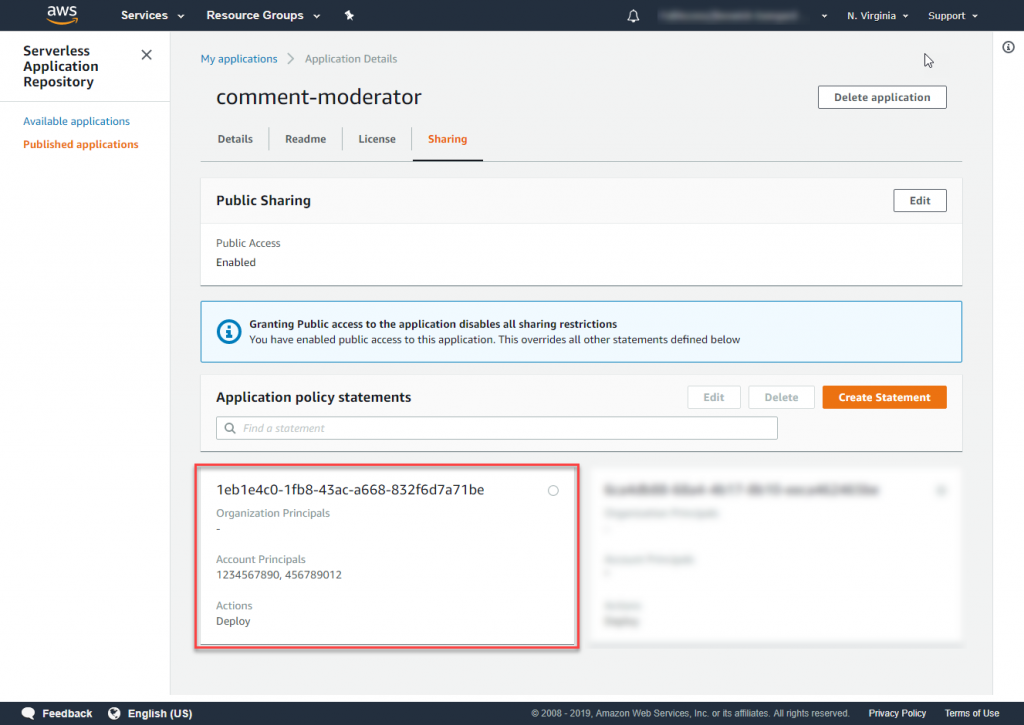AWS Compute Blog
Tag: serverless
Building faster, lower cost, better APIs – HTTP APIs now generally available
In July 2015, AWS announced Amazon API Gateway. This enabled developers to build secure, scalable APIs quickly in front of a variety of different types of architectures. Since then, the API Gateway team continues to build new features and services for customers. Figure 1: API Gateway feature highlights timeline In early 2019, the team evaluated […]
The AWS Serverless Application Repository adds sharing for AWS Organizations
The AWS Serverless Application Repository (SAR) enables builders to package serverless applications and reuse these within their own AWS accounts, or share with a broader audience. Previously, SAR applications could only be shared with specific AWS account IDs or made publicly available to all users. For organizations with large numbers of AWS accounts, this means […]
Generating REST APIs from data classes in Python
This post is courtesy of Robert Enyedi – Senior Research Engineer – AI Labs Implementing and managing public APIs is greatly simplified by API Gateway. Among the various features of API Gateway, the ability to import API definitions in the Open API format is powerful. In this post, I show how you can automatically generate REST […]
AWS Lambda now supports Ruby 2.7
You can now develop your AWS Lambda functions using Ruby 2.7. Start using this runtime today by specifying a runtime parameter value of ruby2.7 when creating or updating Lambda functions. New Ruby runtime features Ruby 2.7 is a stable release and brings several new features, including pattern matching, argument forwarding, and numbered arguments. Pattern matching […]
Deploy and publish to an Amazon MQ broker using AWS serverless
If you’re managing a broker on premises or in the cloud with a dependent existing infrastructure, Amazon MQ can provide easily deployed, managed ActiveMQ brokers. These support a variety of messaging protocols that can offload operational overhead. That can be useful when deploying a serverless application that communicates with one or more external applications that […]
Building a serverless URL shortener app without AWS Lambda – part 3
This is the final installment of a three-part series on building a serverless URL shortener without using AWS Lambda. This series highlights the power of Amazon API Gateway and its ability to directly integrate with services like Amazon DynamoDB. The result is a low latency, highly available application that is built with managed services and […]
Building a serverless URL shortener app without AWS Lambda – part 2
This post is the second installment of a three-part series on building a serverless URL shortener without using AWS Lambda. The purpose of the series is to highlight the power of Amazon API Gateway and its ability to integrate directly with backend services like Amazon DynamoDB. The result is a low latency, highly available application […]
Building a serverless URL shortener app without AWS Lambda – part 1
When building applications, developers often use a standard multi-tier architecture pattern that generally includes a presentation, processing, and data tier. When building such an application using serverless technologies on AWS, it might look like the following: In this three-part series, I am going to challenge you to approach this a different way by building a […]
Analyzing API Gateway custom access logs for custom domain names
This post is courtesy of Taka Matsumoto, Cloud Support Engineer, AWS If you are using custom domain names in Amazon API Gateway, it can be useful to gain insights into requests sent to each custom domain name. Although API Gateway provides CloudWatch metrics and options to deliver request logs to Amazon CloudWatch Logs, there is […]
Integrating Amazon EventBridge into your serverless applications
Event-driven architecture enables developers to create decoupled services across applications. When combined with the range of managed services available in AWS, this approach can make applications highly scalable and flexible, with minimal maintenance. Many services in the AWS Cloud produce events, including integrated software as a service (SaaS) applications. Your custom applications can also produce […]









